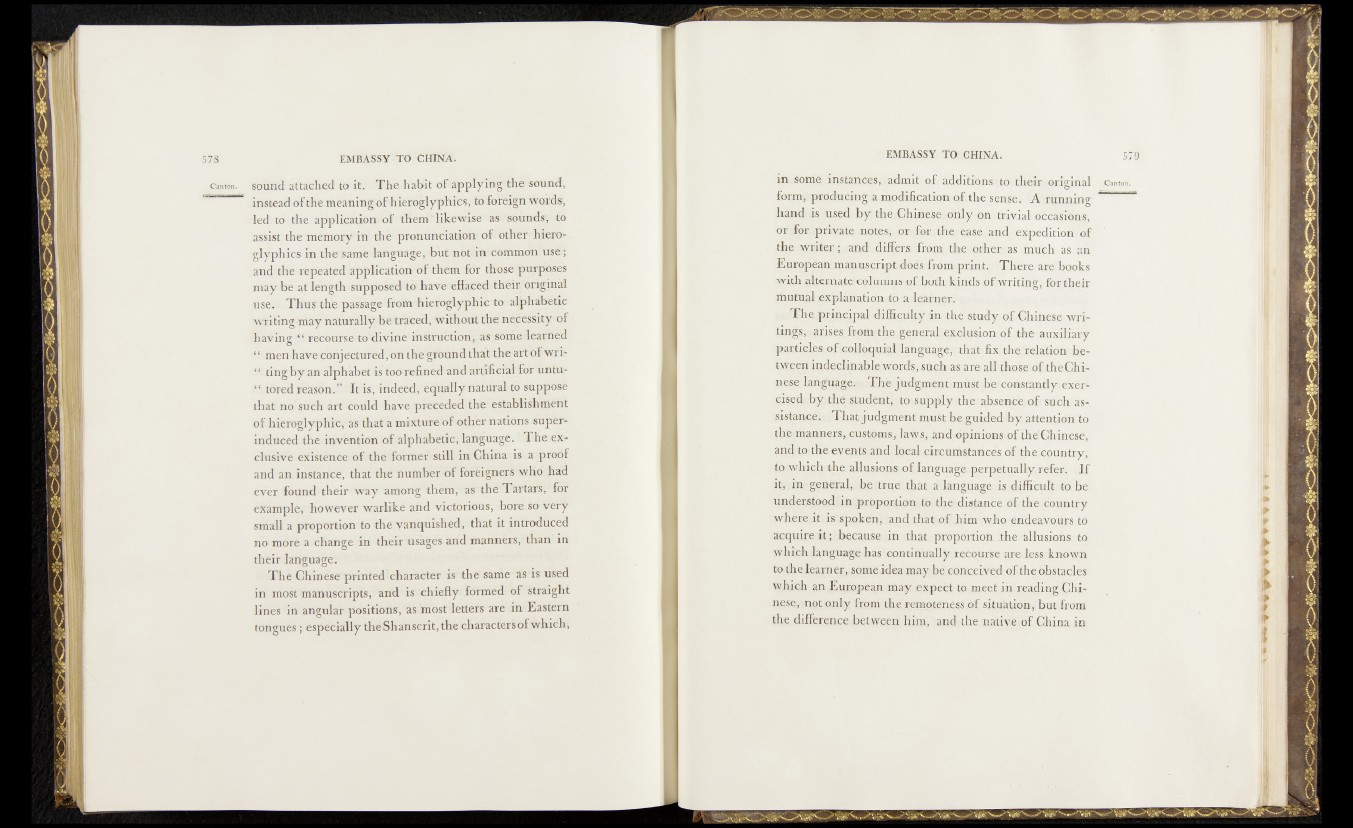
canton, sound attached 40' it. The habit of applyingHhe^sound,
instead of the-meafiMg o f hieroglyphics, to foreign wordy,
gfedvto th e •äpplication.of them''likewise as*“rounds, to
.assist the* memory in the' pronunciation? oE other hieroglyphics
in the^Samèdanguage, but nothin common'use 5
and'tEeÄlp^ftÄipplteäti&’ii of them fdr thosepurposes
may be at length supposed to have effaced'their, original
-use. Thus the passage frota hieroglyphic to * alphabetic
writing may naturally be traced, without thé necessity ^of
having lu recourse to divine instruction; as sorheilearned
m men have conjectured, on the ground that the artdfiwri-
“ ling by amalphabet is töê refined and attificiaWor miitor
;f Stored Äisdö.” It is, indeed, equally nat»rat4<$
that no such art could have preceded the* establishment
o f hierogly phic, as that a mixture bf other natens supers
induced the invention of alphabetic, language., The ex*
clnèivé existence, of theTörmer still in China is a piodf
and an instarieév that the number n f foreigners who had
ever found their way amohg them, as the Tarta rs^ !*
^ i n p l e , however warlike and victorious, bore stfwery
small a proportion to the vanquished, 1 that it introduced
no moré a. change in their usages and manners, than in
Ä i i langua^e^ *
The Chinese printed character is the same as is tised
in most manuscripts, and is chiefly formed, of straight
lines in angular positions, as most letters are in Eastern
tofagues *; especially the Shanscrit, the characters of which,
in*Scfflf<.iinsta'ne^'ttaHmit oh>a‘Hditi|ina'fto their ioriffinal
fform:,iprQdu(intom3olliicatiomofliiii^.nis>p JA running *
hand is iu sqd i b y| th e * trivia hoe dapk on s;
m if^®|pW/ato ttoipss,;. of
th^'WTiteBgsiandudiffe^l^im tjhet^feheis^as mueb^asah
European ma®u&&rip&da4§rfrom print. Thisr# a®e.,books
affernatefcelurons^fihothkinpspfiwriting^foritheir
mu.tna*l'.psJplahatioh*lkva le-arjTer^&
ifc;The.pkncipal difficulty dn t-helatody o fB a ^ ^W r i -
.t iag^o^gisg^froml he,%&ner ahnfleki slon ^rff < fl-nffill h r.y
jaaiqticlfesjiofiaohpqia ial *langUaig@^|Ei|t) fix,th'e Relation v-b^-
tw e d iadoG-lapablelwoiids, su.oh as are, alh th o ^o f thb Gfei-
jjesg I’a^jragi^iThfe judgmen 11 mfet i^ebmstantl^ei^eP
fiisgd by, thaastudenti .to -s supply the a-bss^e^of such-taS;
sistai^egn-iThat jhdpnent* must b^igmidedfey^fet-eBtion to
tbfe|ma»Becs,,customs,daws,\and dpinionsiof th g l ^ k ^ s ^
and tp-th'e’efyepts;and local circumstances oif theicpuntry;
tQiwhiph the ■allusioits, of 1 auguagfespeipbtua&ylrefer'. „If
it,'iin/ge>nei'alJ{ be,true that a.1 anguageoiSidifficult to be
undeisstQOjd'jn^prsporjion.to, the^distanfeo:d€ ihewoutotry
where sitils's!pokep; and that of him who'dnHeasvonrs to
acquire* itb e c a u s e in that proportion ,t>ke allusions‘ to
whfcbjfenguage has continuallyrxecourse. areiless.known
to the learner, someddea may belconseived.of thepbita'oles'
M tk h an Jiqropeap may expert to meet in'reading Chinese,
not only from theJiejnotenesSioCsituatiQn^Hmt.from!
the difference between him, .and the nativerof China in
It
I
III
fi
t